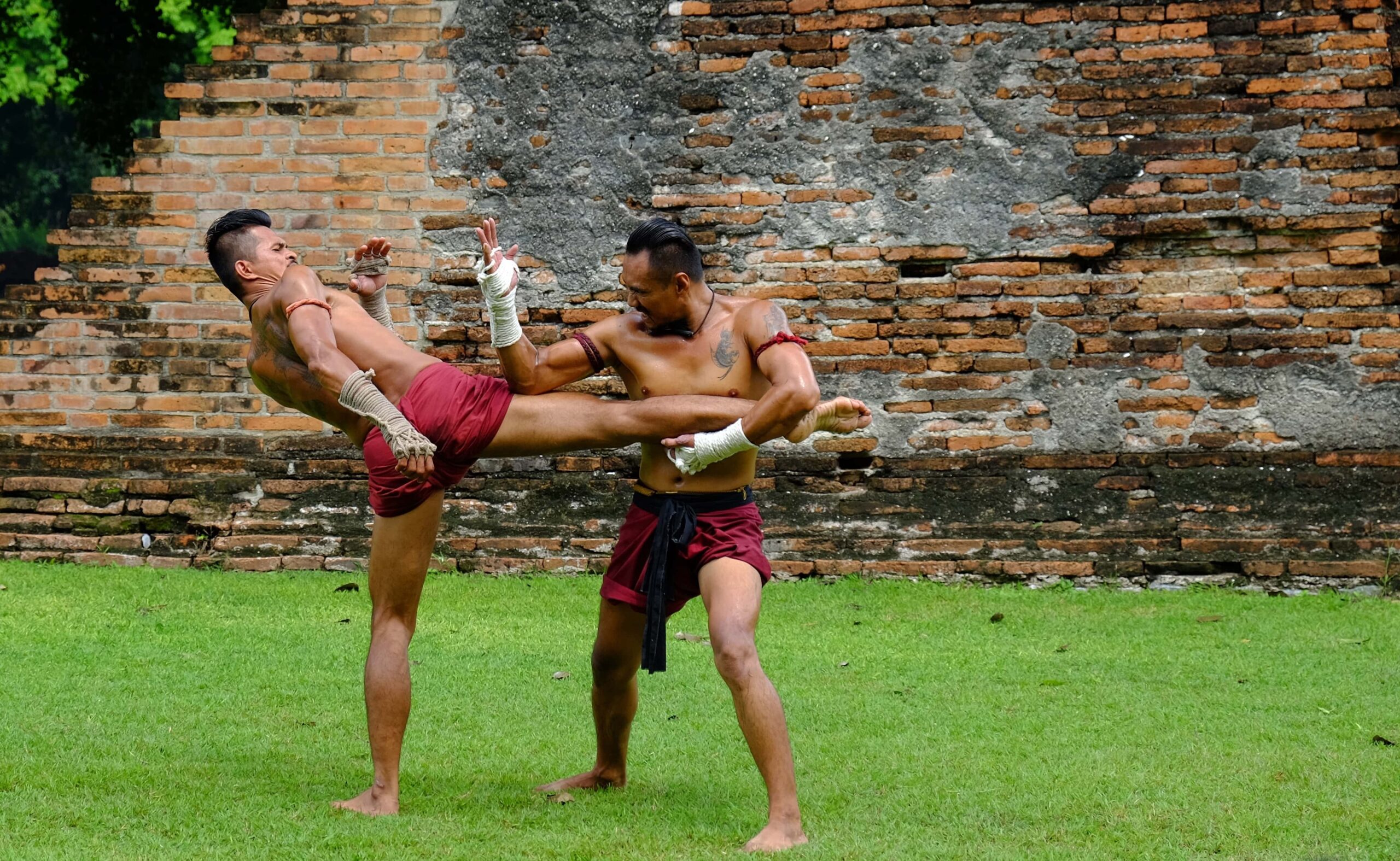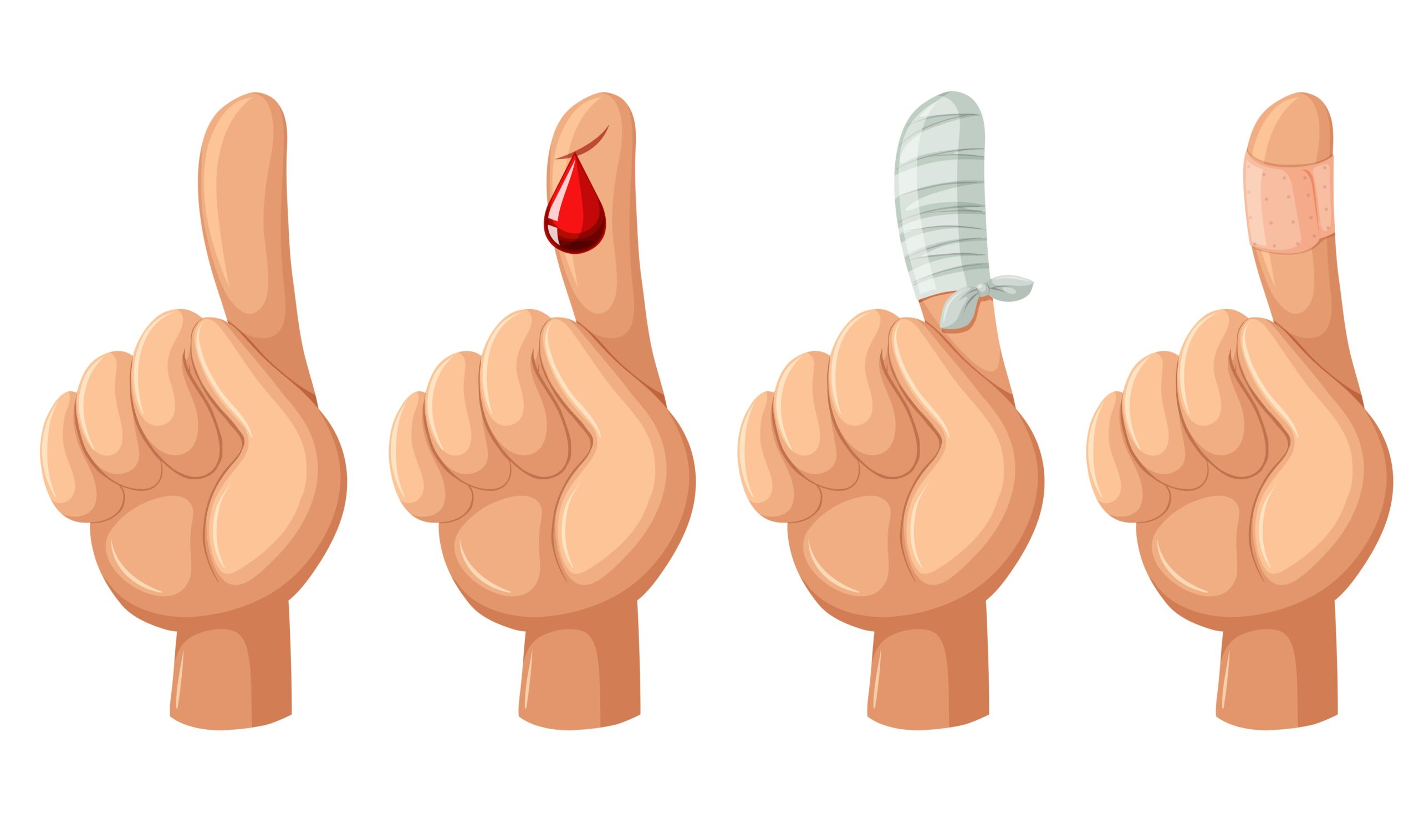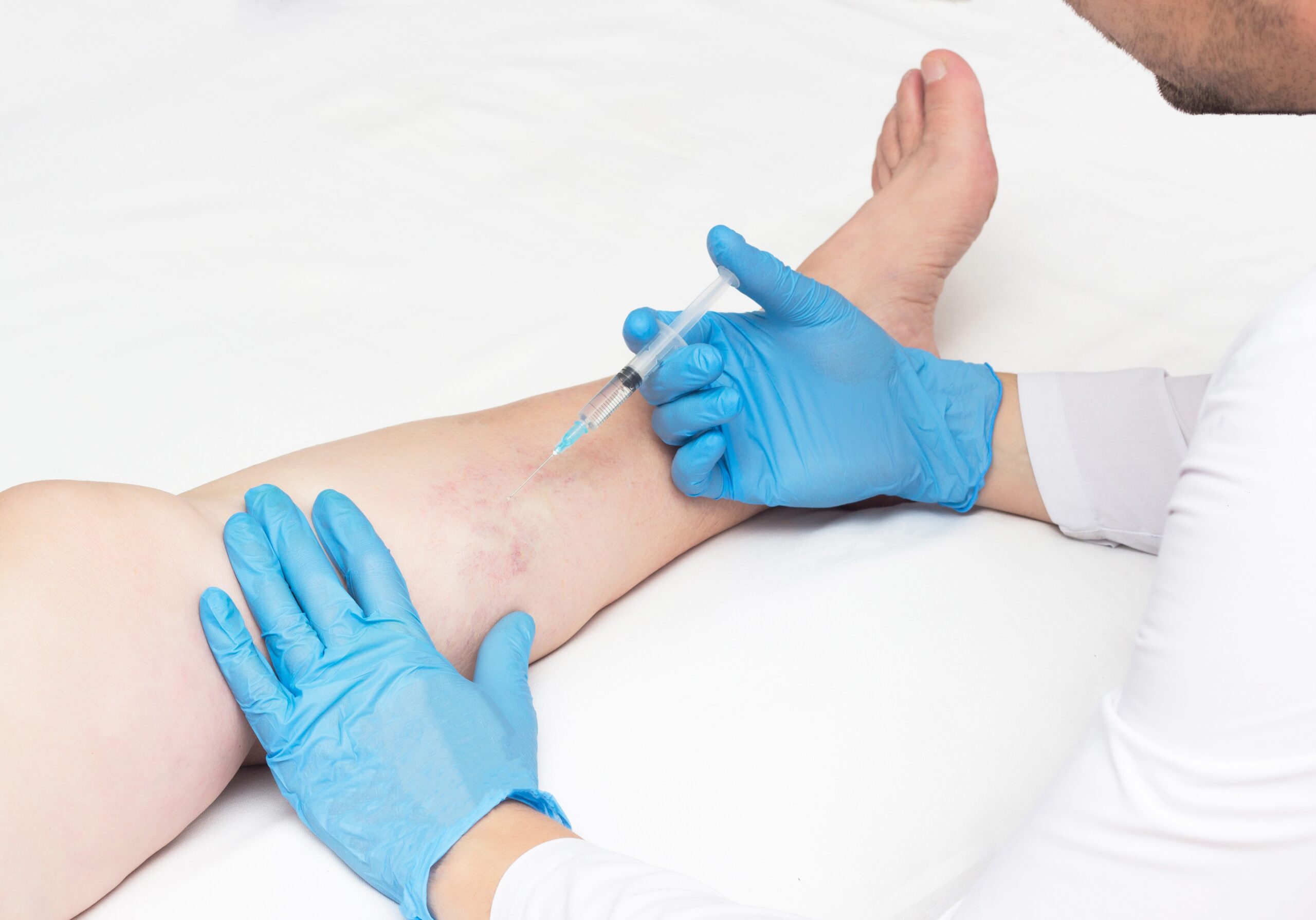Combat Arts Shin Injuries Overview
In the second round of the UFC 168 Middleweight Championship fight between Anderson Silva and Chris Weidman in 2013, Anderson sustained a horrific injury while executing a leg kick against Weidman. The fight was stopped when Anderson broke his left tibia and fibula, requiring surgery to insert a titanium rod in his tibia. See the fight video clip.

Shin Injury Causes
Fractures of the tibia and fibula are the most common fractures in the lower extremity. Increasing loads can also stress the bones of the shin causing them to develop stress fractures. High-velocity kicks can break the tibia and fibula. A sudden blow can also cause the leg to buckle and the bone to break.
Many martial artists avoid wearing shin guards or shin splints as they tend to slow them down. Shin conditioning is an important part of Muay Thai for the same reason. Traction forces develop on the leg, either on the bone or the muscles, and causes various chronic injuries.
Shin Injury Symptoms

Types of Shin Injuries
Since the tibia and fibula are an integral part of the shin. Injuries to these bones are of primary concern. Some of the injuries that are commonly seen in martial artists are fractures of the tibia, fibula, and stress fractures that are also called Medial Tibial Stress Syndrome.
Related Injuries
Shin splints or medial tibial stress syndrome is an inflammation of the muscles, tendons, and bone tissue around the tibia. The pain occurs along the inner border of the tibia where muscles attach to the bone. In severe cases, enough stress may be placed on the lower leg to cause the muscle, tendons, and ligaments to separate from the bone. Rarely do shin splints cause fractures.
Shin splints may be very mild creating only a simple stress response or bad enough to damage the shin bone with a severe stress fracture. Shin splints are one of the common causes of shin pain in martial artists.
Symptoms
Shin splints may occur on the front or anterior part of the shin bone or the inside rear or posterior part of the shin bone. The placement of injury is shown by where pain flares up during movement. If pain occurs when lifting the toes while keeping heels on the ground it is most likely from anterior shin splints, but if there is pain along the inside rear of your shin bone it is probably from posterior shin splints or tibia stress fractures.
Symptoms may include:
Causes
Shin splints occur from overuse and improper use of the leg. Shin splints and shin pain are common results of overloading, overtraining, training on inappropriate surfaces (cement, tile, etc.), and pushing the body too hard, too fast. A martial artist doing 400 roundhouse kicks in a row on a heavy bag, or training for Iron Leg without allowing the body sufficient recovery time, for instance, may develop shin splints.
Causes include:
To learn how Shin Splints is diagnosed Click Here
Overview
Brazilian UFC fighter Thiago Santos went through his entire bout with injuries. His loss was compounded by several of them. Three torn ligaments, a torn meniscus, and a fractured tibia. How he went on to fight was beyond his audience and his opponent. Tibial fractures are common in athletes who use their legs to fight, train, or compete. Horrific tibial fractures have been seen among Olympic gymnasts, pole vaulters, runners, baseball, combat artists, kickboxers, and other players due to accidental falls, wrong landings, and sudden kicks. Even in sports where shin guards are used like soccer, tibial fractures are common and horrific. The injury is obvious because the deformity is clear to see. If there is an open fracture, the very sight of the bone jutting out can be distressing.
Symptoms
Causes
There are two ways to sustain a tibial fracture. One pattern is that of a lower energy force, the other is a high energy mechanism. In a low-energy injury, it is usually torsion that acts on the tibia. The torsional force from indirect trauma affects the tibia. These could be trauma to the thigh, femur, or fibula that causes spiral fractures as the forces travel down the tibia. Here there is less soft tissue injury and it could be associated with a fibular fracture as well. In high-energy injuries, there is direct trauma. Any high-velocity impact through a punch, kick or jab can cause a wedge or short oblique fracture. These fractures can be severe enough to fragment the bone and cause significant soft-tissue injury.
To learn how Tibial Fractures is diagnosed Click Here
Fibular fractures usually occur due to trauma and in concurrence with tibial fractures. That’s not always the case. Take, for instance, US Olympic, taekwondo bronze medalist, Steve Lopez. His hopes to add a third Olympic title to his Olympic haul ended in his first-round fight. Since 2000, when taekwondo became a full Olympic sport, Lopez has always taken home a medal. That year was different. He played through pain and injury ignoring what eventually was diagnosed as a broken right fibula.
The fibula is one of the two long bones that form the shin in the leg. Unlike the tibia, it is a non-weight bearing bone, carrying about 17% of the body weight. It’s much smaller and thinner and so easily breakable. In contact sports, the fibula is not injured in isolation. Fibular injuries accompany injuries to the tibia as a result of a collision, falls, and high-velocity kicks. They are ignored because they are often confused with an ankle sprain.
To learn how Fibular Fractures are diagnosed Click Here

Common Injuries
Our Common Injuries section has more about shin contusions and lacerations that are sustained during a bout or training.
Shin Injury Diagnosis
The diagnosis of shin injuries is typically through physical exams and imaging. It’s not hard to visualize fractures of the tibia and fibula since the deformities are visible to the naked eye. However, stress fractures require imaging for confirmation. Blood tests are only required in the case of repetitive stress fractures to rule out other metabolic diseases.
Injury Specific Diagnosis
Physical Exam
To diagnose medial tibial stress syndrome physical examination is extremely important. The fact that the martial artist has a long history of stress or overuse of the leg supports the diagnose of shin splints. The doctor will check for any exercise-induced pain along the distal two-thirds of the medial tibial border. If there is pain during activity or after any activity which reduces with rest, this a sign of MTSS. Any cramping or burning pain in the back of the leg is also checked. Doctors will test for numbness or tingling in the foot.
As they examine, they will inspect and palpate the entire lower extremity. If there is pain reproduced by palpating the posteromedial tibial border > 5 cm then it signals MTSS. If other findings like severe swelling, erythema, loss of distal pulses are also present then doctors will diagnose MTSS, provided the above components are seen.
Imaging
Medial tibial stress syndrome is a clinical diagnosis. Imaging is only done to rule out other injuries. Plain radiographs are usually normal. Even early stress fractures provide no findings on plain film radiography. The "dreaded black line" is diagnostic of a stress fracture.
MRI is the best imaging modality for MTSS. It can also detect higher grade stress injuries in the bone such as a tibial stress fracture. Nuclear bone scans are another alternative. They are not as specific but can be used. On MRI, periosteal edema and bone marrow edema are seen.
Nuclear bone scans show radionuclide uptake in the cortical bone. This increased uptake has a characteristic “double stripe” pattern. High-resolution CT is another alternative but not as sensitive as an MRI.
Lab Tests
In martial artists who have recurrent stress fractures or develop MTSS frequently, vitamin D level in the blood is tested. Calcium, phosphate levels, and renal function tests are done.
To learn how Shin Splints is treated Click Here
Physical Exam
During the physical exam, the range of motion and examining the stability of the joint is virtually impossible due to the gross injury. In most cases, the neurovascular exam is done. This is to ensure that peripheral pulses and nerve supply are still intact. Doctors will palpate the dorsalis pedis and posterior tibialis arteries.
Doctors will also check the soft tissues for any signs or symptoms of compartment syndrome. This includes any tightness in the muscles, shiny skin, pain that is out of proportion to the injury and redness. The skin is examined for laceration, abrasions, fracture blisters, and the condition of the leg compartments.
Imaging
Plain films are initially obtained and usually diagnostic. The following views are obtained; full-length AP and lateral views of the affected area, AP, lateral and oblique views of the knee and ankle, the same side of the injury. CT scans can identify any joint involvement and rule out a posterior malleolar fracture. The latter is seen in spiral distal third fractures. If joint involvement is suspected a CT scan is done. Based on the imaging, the tibial fractures are classified via two systems. The first is Oestern and Tscherne. It classifies closed fractures.
Grade 0: Injuries by indirect forces, minimal soft tissue damage
Grade 1: Superficial contusion/ abrasion, simple fractures
Grade II: Deep abrasions, muscle/skin contusion, direct trauma, impending compartment syndrome
Grade III: Excessive skin contusion, crushed skin or muscle destruction, subcutaneous degloving, acute compartment syndrome, and rupture of a major blood vessel or nerve
The Gustilo-Anderson classifies open tibia fractures:
Type I: limited periosteal stripping, clean wound < 1 cm
Type II: mild to moderate periosteal stripping; wound > 1 cm
Type IIIA: significant soft tissue injury, significant periosteal stripping, wound > 1 cm, no flap required
Type IIIB: significant periosteal stripping, significant soft tissue injury, flap required
Type IIIC: significant soft tissue injury, a vascular injury requiring repair
Lab Tests
Blood tests are not necessary to diagnose fractures of the tibia.
To learn how Tibial Fractures is diagnosed Click Here
On physical exam, the doctors will palpate the leg for tenderness. This is especially over the fibula on the side of the leg. Pain here could indicate a fibula shaft fracture. The skin is examined for lacerations, abrasions, contusions, bruising, and signs of compartment syndrome. The doctors will test the range of motion of the joints above and below the injury. Ligaments of the knee are also checked. This means testing the knee and ankle to rule out intra-articular injuries. A neurovascular exam is done to ensure the nerve supply is intact.
It is necessary to obtain weight-bearing anterior-posterior, lateral, and oblique films (Fig. 73.10). The arrow indicates the site of malunion. Plain films of the knee and ankle are done to rule out fractures of other bones like the tibia. Imaging identifies simultaneous fractures. Isolated fractures of the fibular neck also known as Maisonneuve fracture are syndesmotic injuries. Evidence of this on plain film should raise suspicion for other ligamentous injuries. This changes the management plan for the injury. Similarly, any fibular fracture within 15 cm of the ankle joint can involve the tibia, ligaments, or both. A CT scan diagnoses rotational deformities and malunion of the syndesmosis.
Blood tests are not necessary to diagnose fibular fractures. Imaging and physical exam are diagnostic.
To learn how Fibular Fractures are diagnosed Click Here

Common Diagnoses
Browse through our Common Diagnoses section to learn more about how various imaging modalities are used to diagnose injuries to the tibia and fibula.
Shin Injury Treatment
The treatment of shin injuries depends on several conditions; type of injury, closed versus open, acute versus chronic, the involvement of other joints and ligaments, age of the fighter, and associated metabolic conditions.
Injury Specific Treatment
Emergency Treatment
The treatment is usually conservative. Bed rest is recommended. No weight-bearing is allowed initially.
Medical Treatment
MTSS treatment is usually rest and the modification of activity. Stop all repetitive, load-bearing exercise. The duration of rest depends entirely on the individual. There are alternative therapies that can help those who suffer from MTSS. They include cryotherapy or ice massage, iontophoresis, phonophoresis, ultrasound therapy, periosteal pecking, and extracorporeal shockwave therapy.
Other therapies with no studied benefit include stretches, low-energy laser therapy, strengthening exercises, lower leg braces, and compression stockings.
Prefabricated orthotics do reduce MTSS according to various studies.
In martial artists who have MTSS repeatedly or those who respond rather slowly to conservative treatment with rest and modifying activity, it may help to optimize calcium and Vitamin D. Physical therapy must include gait retraining and strengthening exercises.
Severe tibial stress fractures require surgery if they do not respond to medical or conservative therapy.
Home Treatment
Most martial artists recover fully with adequate rest and by modifying their activities. Medial tibial stress syndrome can progress to a tibial stress fracture. This is because any cortical microtrauma can evolve into a larger cortical fracture. This is not the case with every MTSS injury.
MTSS is a stress reaction to the tibia due to overuse. It is therefore important for a martial artist to have a graded exercise regimen. Avoid overtraining. Allow adequate recovery time after each training. Optimize vitamin D and calcium levels through supplementation.
Emergency Treatment
After initial ATLS protocols are followed, doctors choose to perform wound debridement as a primary emergency procedure with no secondary reoperation. This is for all open tibial fractures.
Medical Treatment
Non-operative treatment is chosen for closed fractures. A long leg cast that offers closed reduction is preferred for fractures with an angulation of fewer than 5 degrees of varus-valgus. Closed reduction is also preferred where the anterior-posterior angulation is less than 10⁰. If there is more than 50% cortical apposition, less than 1-cm shortening, less than 10- 20 degrees of flexion, and less than 10 degrees of rotational malalignment after reduction, then closed reduction is done.
Surgical treatment includes many techniques. The first is external fixation. It is preferred when there is significant soft tissue injury. If the neurovascular status is compromised, then this is the go-to procedure. Intramedullary Nailing (IMN) is chosen for fixation via surgery as it is associated with less malalignment, the time taken for the union of the bone is less and the time to weight bearing is much faster.
Percutaneous Plating-Shaft is used in fractures of the distal tibia and proximal third fractures. These fractures are too close or too far for IMN.
Amputation is another option. Although, not many combat fighters will want this. If the leg is severely mangled and scores high on the mangled extremity severity score (MESS) an amputation is done. A score of 7 or more indicates a necessity for amputation. Significant soft tissue trauma, warm ischemia for more than 6 hours, and associated foot trauma might also be relative conditions for amputation.
Home Treatment
In martial artists, where the tibial shaft fractures are treated conservatively, the combat artist has to keep the affected leg in a long leg cast. He has to be non-weight bearing for 6 weeks. Those who have surgery like external fixation, especially unstable fractures will require longer periods of inactivity. These combat artists have to be non-weight bearing for 6 weeks for articular fractures outside the joint and for 12 weeks for intraarticular fractures.
In length-stable fractures, some doctors may allow patients to bear weight as tolerated. In cases where the tibial fractures were treated via IMN or plating the same applies as for external fixation. Tolerate weight and use pain as a guide as return to activity commences. During the recovery period, maintain active knee and ankle range of motion. DVT prophylaxis care is given to all athletes who are non-weight bearing when it comes to lower extremity fractures.
Most fibular fracture injuries are treated symptomatically. The treatment is conservative with a hinged knee brace and adequate pain management. Early knee motion is encouraged to prevent joint stiffness.
No stabilization is required for proximal fibular fracture in a Maisonneuve injury. Intraosseous and or syndesmotic injury require fixation near the ankle. This is the case if the distal tibiofibular joint is highly unstable. Closed reduction and casting are an alternative treatment.
Open reduction and internal fixation are only done for acute injuries where there are avulsions of the LCL.
In most cases, isolated fibular shaft fractures are treated conservatively. This is possible as the fibular shaft is not a weight-bearing bone. Weight-bearing is slightly restricted and martial artists are mobile with a walking boot.
Isolated fibula shaft fracture typically requires only symptomatic treatment. They do not have any weight or long-term limitations. In 6-8 weeks, the fractured bone achieves union.

Common Treatments
Read more about treating injuries in the shin in our Common Treatments section.
